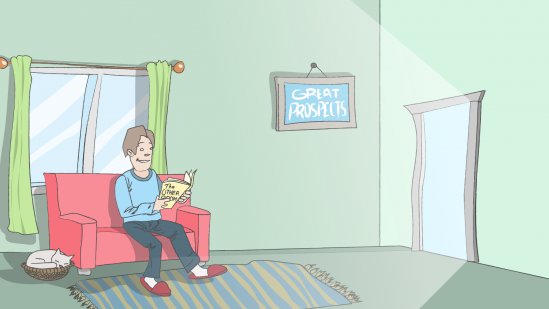Learners’ real-life work situation and motivators
In this blog, the second in our “content-last” series, we’ll focus on finding out about your learners’ real-life work situation and motivators, as this is one of the secrets to creating a successful learning programme.
It’s extremely difficult to provide knowledge or improve skills effectively until barriers are minimised and learners’ intrinsic motivation maximised. In the end, they are the best people to tell us about how to do both. Listening to learners is an essential part of the content-last approach.
Honestly looking for barriers
When we take a content-first approach to creating a learning programme, we’re mainly assuming that a lack of knowledge or skills is the main reason that our target group has not changed their behaviour. We’re assuming that by providing the knowledge and the opportunity to learn new skills, we’re guaranteeing the required behaviour changes. This is 100% not true.
How you might see your learner's situation:

How it might really be:

Let’s use an analogy here
If you wanted me to get up from my (very comfy) sofa in this room and go and sit in the next room you could:
a) Show me where the door is, tell me why you’d like me to go through it (Knowledge)
b) Teach me how to walk, if I can’t already (Skills)
Unfortunately, that’s not going to guarantee that I actually do it. For example:
c) Maybe I’d like to move, but I can see lots of big pieces of furniture in the way that I’m going to have to get around and it’s too difficult at the moment (Barriers)
OR:
d) I’m quite literally in my comfort zone and don’t want to move (Lack of motivation)
In the first case, I’d really like you to move the big pieces of furniture out of the way for me so I could walk there in a nice, straight line. Otherwise, despite my motivation to get to the next room, I’m not going to make it there.
If there is no learner representative, we often don’t realise that the “furniture” is there in the first place. Or, if we do, we downplay it and expect them to climb over the “furniture” or move it themselves. We might even take the attitude that it doesn’t matter, because our learners are paid to climb over whatever “furniture” there is anyway.
Your learner representative can tell you what the “furniture” is in real life — i.e., what barriers they face. Often these are very surprising but also, in many cases, surprisingly easy to overcome.
The best results come when learners are intrinsically motivated
In the second case in our analogy, I have no reason to go to the next room. Any HR professional knows that, if I was intrinsically motivated to go to the next room, my desire to stay there would be higher. If you knew what my specific intrinsic motivation was, you could use that to get me off my sofa.
For example, in a recent project, we discovered that our target group’s key motivator was “looking professional to customers”. We could then use that throughout the learning programme as a learner benefit.
The problem is that intrinsic motivation is, well, intrinsic. Even though motivation factors at work are well studied, specific motivators are not, probably because it is quite hard to do so. So, you probably won’t be able to guess my intrinsic motivators unless you ask me. You might try something extrinsic, like telling me there’s a lovely cake in the next room that I can have. The problem is, even though I like cake, it’ll soon by gone and I’ll be wishing I was back on my sofa again.
So, your learner representative can be a valuable source of what intrinsically motivates your target group. However, you probably want to use other sources too, like line managers and any surveys that have been done to try to gauge what motivators really work.
More in this series
In our first blog post, we discussed why introducing an LX designer into your project early is a good idea.
In the third post, we will be looking at how to really decide what your company wants from a learning programme.
In the fourth and final post, we will put everything together and decide on the specific skills and knowledge that your learners will need in order to make your learning programme a success.




.png?width=600&name=PL-natiivi-artikkeli-kuva%201%20(1).png)